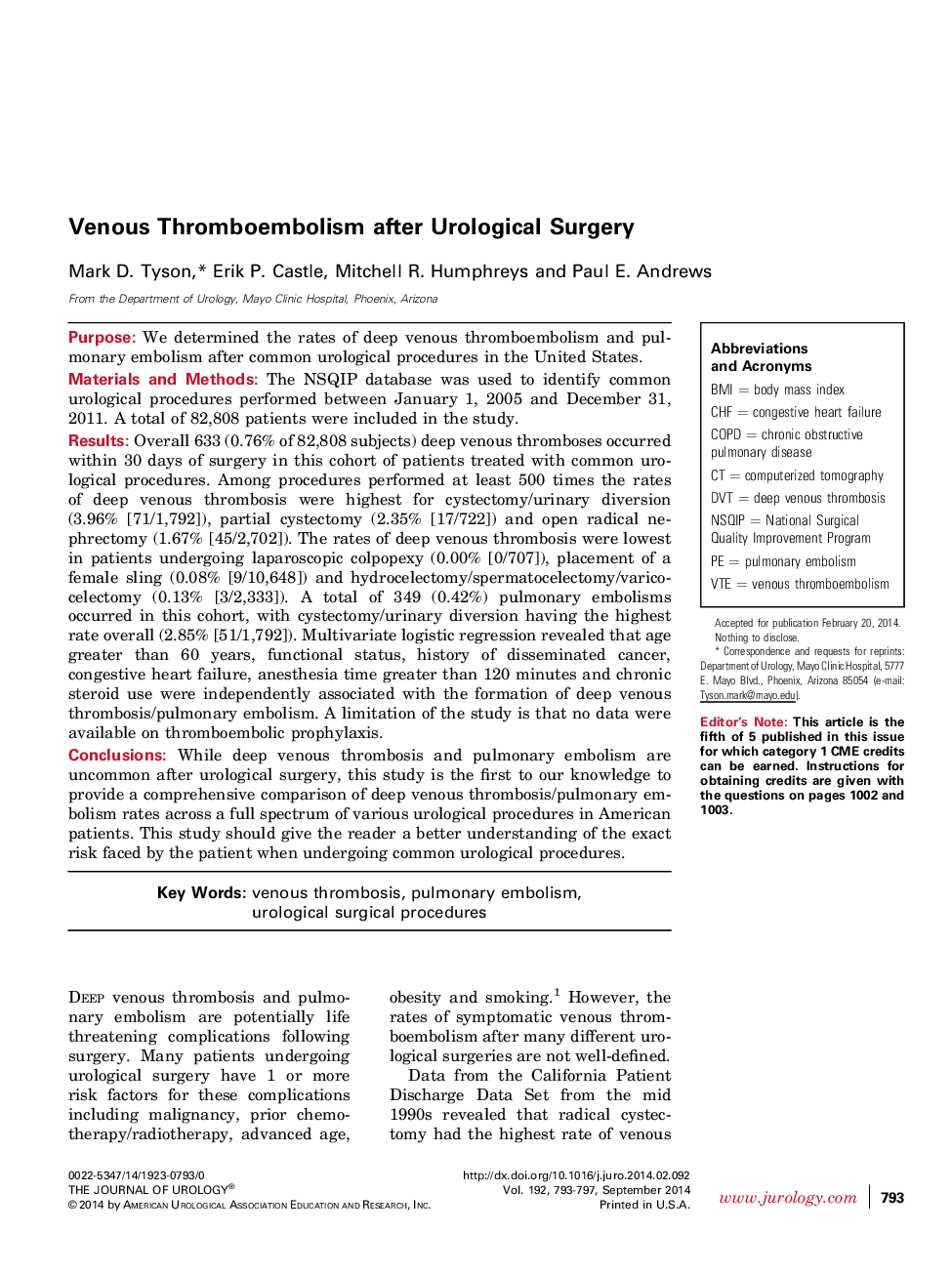| Article ID | Journal | Published Year | Pages | File Type |
|---|---|---|---|---|
| 3860352 | The Journal of Urology | 2014 | 5 Pages |
PurposeWe determined the rates of deep venous thromboembolism and pulmonary embolism after common urological procedures in the United States.Materials and MethodsThe NSQIP database was used to identify common urological procedures performed between January 1, 2005 and December 31, 2011. A total of 82,808 patients were included in the study.ResultsOverall 633 (0.76% of 82,808 subjects) deep venous thromboses occurred within 30 days of surgery in this cohort of patients treated with common urological procedures. Among procedures performed at least 500 times the rates of deep venous thrombosis were highest for cystectomy/urinary diversion (3.96% [71/1,792]), partial cystectomy (2.35% [17/722]) and open radical nephrectomy (1.67% [45/2,702]). The rates of deep venous thrombosis were lowest in patients undergoing laparoscopic colpopexy (0.00% [0/707]), placement of a female sling (0.08% [9/10,648]) and hydrocelectomy/spermatocelectomy/varicocelectomy (0.13% [3/2,333]). A total of 349 (0.42%) pulmonary embolisms occurred in this cohort, with cystectomy/urinary diversion having the highest rate overall (2.85% [51/1,792]). Multivariate logistic regression revealed that age greater than 60 years, functional status, history of disseminated cancer, congestive heart failure, anesthesia time greater than 120 minutes and chronic steroid use were independently associated with the formation of deep venous thrombosis/pulmonary embolism. A limitation of the study is that no data were available on thromboembolic prophylaxis.ConclusionsWhile deep venous thrombosis and pulmonary embolism are uncommon after urological surgery, this study is the first to our knowledge to provide a comprehensive comparison of deep venous thrombosis/pulmonary embolism rates across a full spectrum of various urological procedures in American patients. This study should give the reader a better understanding of the exact risk faced by the patient when undergoing common urological procedures.
